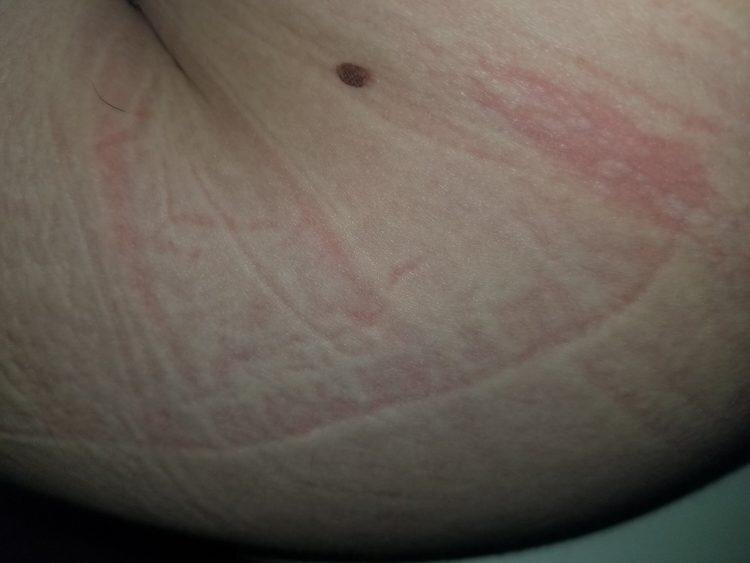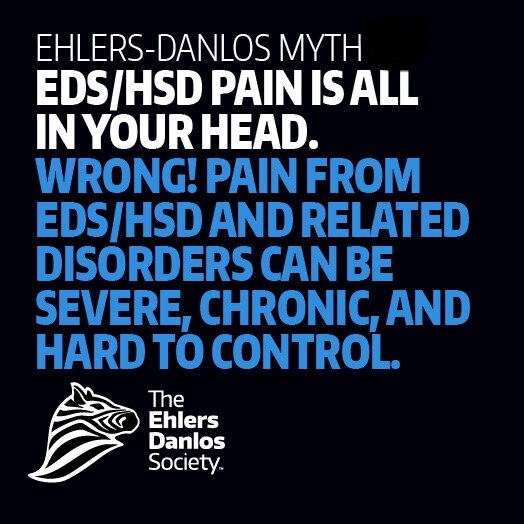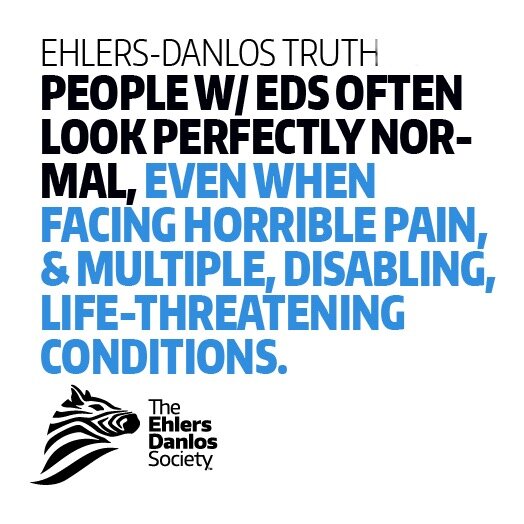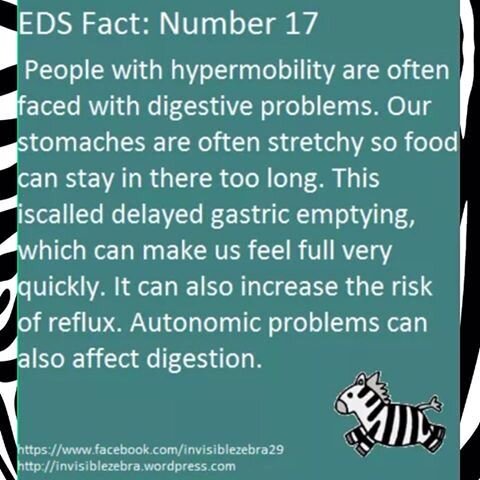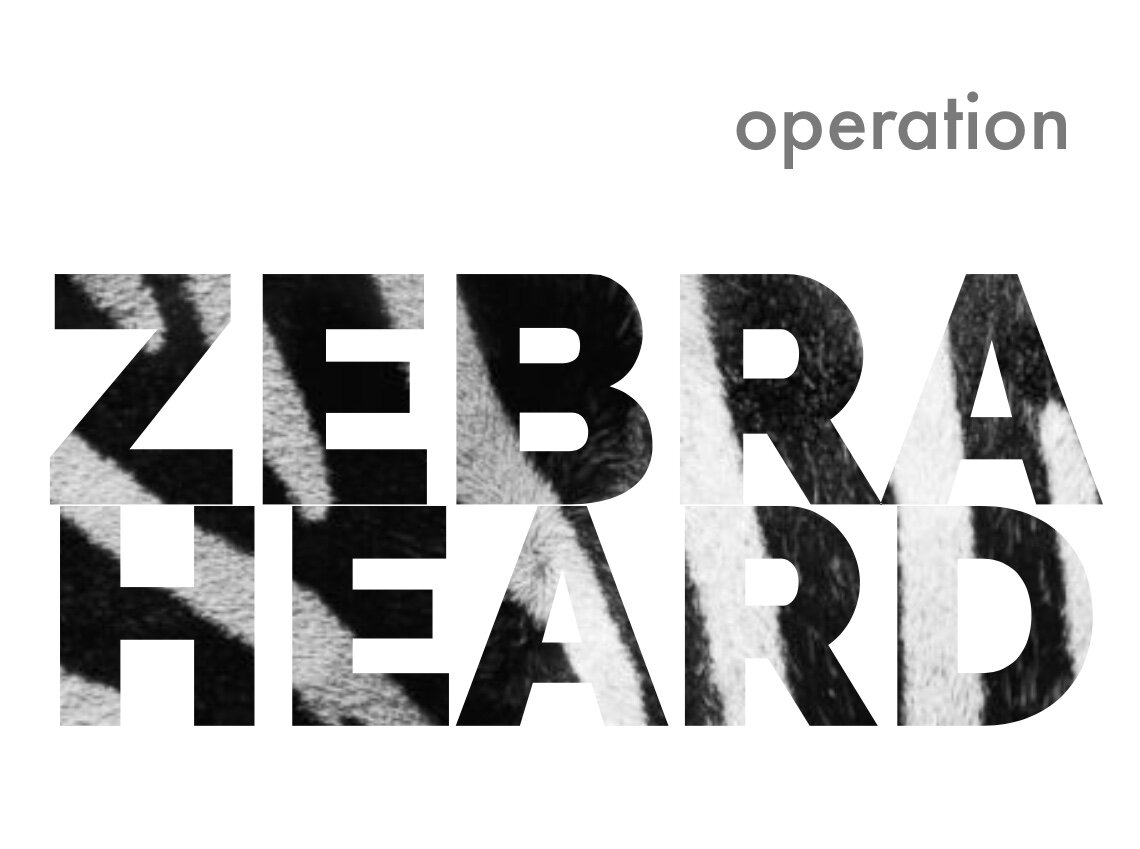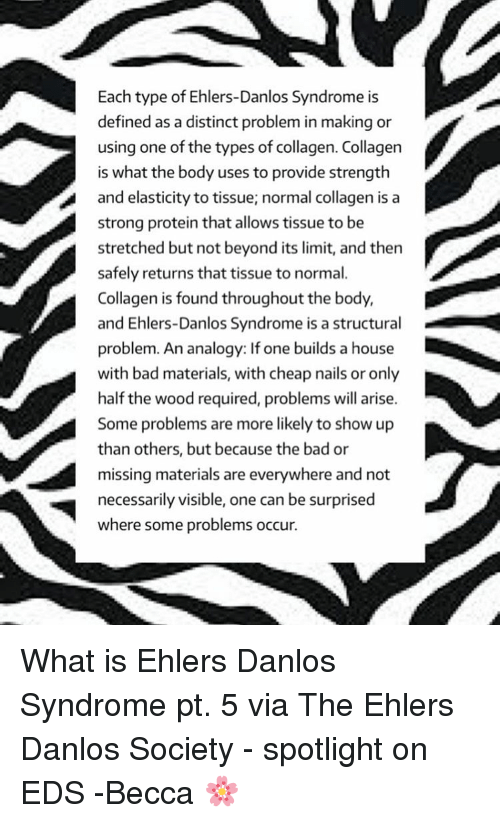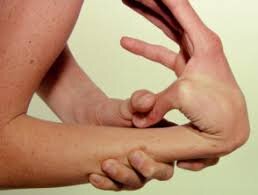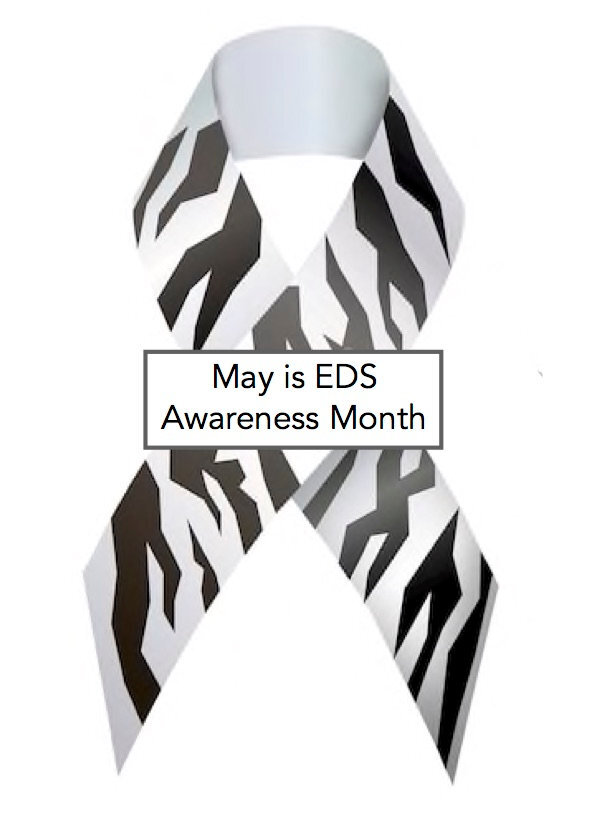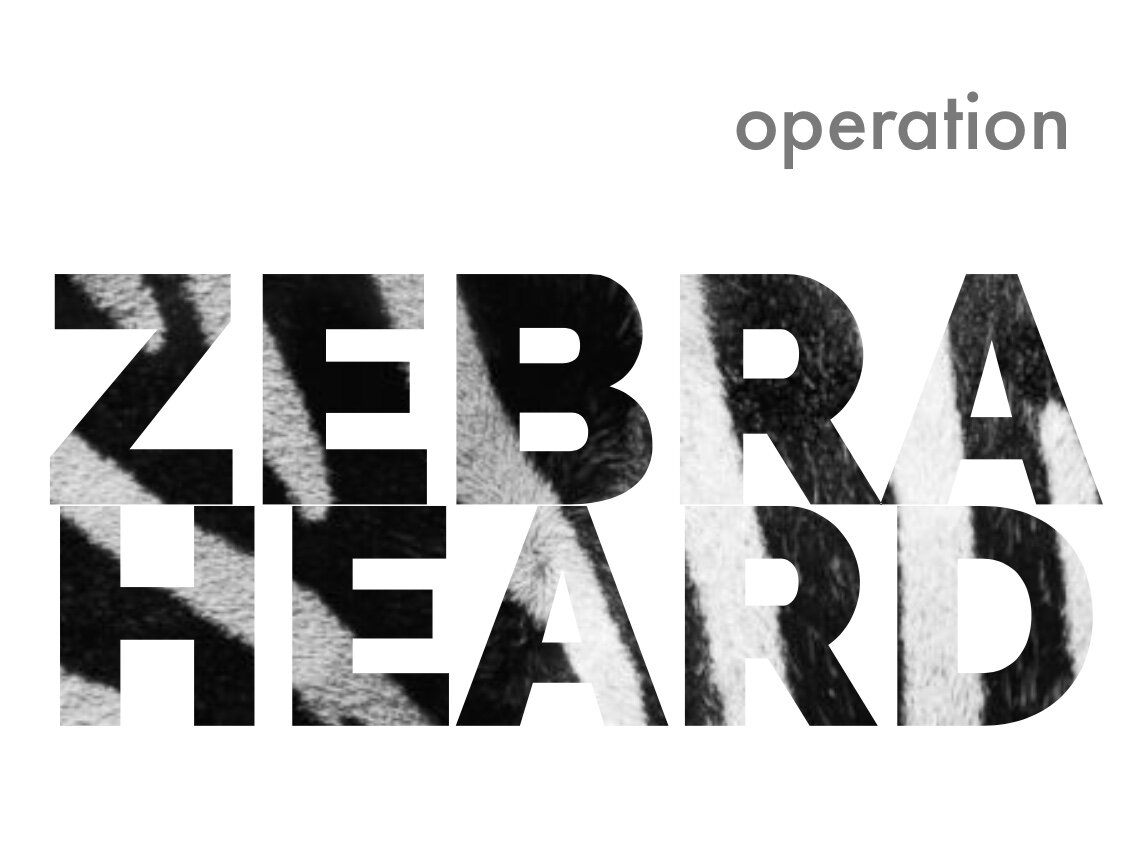
Julie’s Symptoms
and
Diagnoses
Julie’s Diagnoses
Each of Julie’s diagnoses comes with its own list of symptoms. EDS is the underlying cause of her most debilitating diagnoses:
Craniocervical Instability (CCI)
Atlantoaxial Instability (AAI)
Atlantoaxial Subluxation (AAS)
Postural Orthostatic Tachicardia Syndrome
Slow Gastric Emptying / Gastroparesis
Attention Deficit Hyperactivity Disorder
A Simple and Concise Explanation of the Instabilities Caused by EDS can be Seen Here.
In the past, the conditions which Julie was diagnosed with evolved from being the complete diagnosis to being the symptoms of a more extensive and, for 40 years, elusive condition.
Simply put, Ehlers Danlos Syndrome (EDS) causes, in Julie’s case, the ligaments holding bones to each other to be too weak to hold them in the correct place. This causes Craniocervical Instability (CCI), Atlantoaxial Instability (AAI), Atlantoaxial Subluxation (AAS), and Tethered Cord Syndrome (TCS).
Other Diagnoses
Postural Orthostatic Tachicardia Syndrome (POTS)
Multiple Sclerosis
Restless Leg Syndrome
Brainstem Compression/ Medullary Syndrome
Temporomandibular Joint Dysfunction Syndrome
Osteophytes inside spinal cord space
Spinal Stenosis
Sacroiliac Joint Dysfunction (SJD)
Segmental Instability
Intracranial Hypertension
Irritable Bowel Syndrome
Delayed Gastric Emptying / Gastroparesis
Hiatus Hernia
Complex Endometrial Hyperplasia
Retroverted Uterus
Vestibular Dysfunction
Attention Deficit Hyperactive Disorder (ADHD)
Dermographia
Mast Cell Activation Disorder (MCAS)
Myalgic Encephalomyelitis/ Chronic Fatigue Syndrome (ME/ CFS)
Thoracic Outlet Syndrome
Multiple Neuropathies
Multiple Pemature Disk Degenerations
Neurodiversity
Vision Issues Including Temporary Vision Loss
Unstable Body Temperature
Delayed Gastric Emptying
Severe Muscle and Joint Pain
Extremely Rapid Metabolisation of Opiates (inability to use opiate pain medication)
Multiple Food and Drug Sensitivities
Sensitivity causing allergic type reactions to Noise, Scents, Stress, Light, Heat, Cold, Certain Foods and Drink
Some Words of Advice for ME/CFS Patients
Myalgic Encephalomyelitis or Chronic Fatigue Syndrome is an horrific and debilitating condition. As a couple of cases have been reported in the media over recent years where a patient has seemingly recovered from ME/CFS, many sufferers of this illness have sought surgery for a similar result. Sadly, there are overlaps in symptoms between ME/CFS and EDS, CCI, AAI, and AAS. The chance of someone with ME/CFS having CCI, AAI, and/or AAS is quite remote. This can cause extreme distress to those who are desperate for treatment and an escape from their suffering. There are several very promising research projects currently investigating ME/CFS. May they find answers and treatments very soon. Stanford University in the USA is advancing and leading in research and knowledge. It has treatment and research trials which are available only to residents of the USA. Link is HERE.
Although Julie was previously diagnosed with ME/CFS, this has now been replaced with her EDS, CCI, AAI, AAS, and Tethered Cord Syndrome diagnoses. Please read the very, very informative article by Jeff Wood, one of those stories of an apparent ‘cure’ HERE or in the link below. He describes why you need to be prepared that the stories you may have read are, sadly, misleading and giving false hope to millions.
Please be aware that doctors exist who are taking advantage of this situation right across the world. Some specialists raising their fees drastically (300% in one case shortly after reports began of ‘cures’) and also the number of consultations required solely for patients who are trying to discover if they have CCI, AAI, and/or AAS. Some of these doctors are neither qualified nor experienced to carry out surgeries. Julie came close to succumbing to these inflated fees and inexperienced greedy doctors as she was desperate to end her suffering. This behaviour is completely legal under the regulation of medical specialists both in Australia and in many other countries.
Julie’s skull just a fraction of a millimetre away from dislocating
Overwhelming, Painful, and Debilitating
As you will see, the sheer number, unusual, and changing symptoms experienced by Julie contributed to the very long and difficult path to a diagnosis.
The list of symptoms below is not an exaggeration. These symptoms are real in number and type, they are debilitating and painful. Occasionally Julie becomes aware of a new symptom when she discovers that something her body does or something she experiences is not something which everyone experiences as a normal phenomena.
Julie’s Symptoms
Neck pain
Joint pain
Spinal pain
Muscle pain
Migraine headache
Occipital headache
Temporal headache
Severe foot pain
Severe leg pain
Severe depression
Severe anxiety
ADHD - attention deficit hyperactivity disorder
POTS - postural orthostatic tachicardia syndrome
PTSD - Post Traumatic Stress Disorder from medical mistreatment and neglect
Frequent Joint dislocation and subluxation
Hiatus hernia
Osteophytes
Spinal stenosis
Gastrointestinal problems such as IBS - irritable bowel syndrome, and gastroesophageal reflux disease Chronic fatigue syndrome
Fluctuating blood pressure
Restless leg syndrome
Dental issues
TMJ dysfunction including subluxation - temporomandibular joint
TMJ pain
Raynauds syndrome
Dermographia
Mast Cell Activation Disorder
Intermittent food and drug sensitivities
Gastric reflux
Limb paralysis
Eustachian tube dysfunction
Head feels too heavy to hold up
Debilitating fatigue
Insomnia
Hypersomnia
Severe eczema
Inability to concentrate
Cognition issues
Memory issues
Brain fog
Blurred vision
Ciliary muscle dysfunction
Dermographia
Low levels in blood of: iron, vitamin D, Vitamin B, Zinc, magnesium
High level of copper
Spontaneous vomiting
Muscle cramps
Nocturia and frequency
Complex endometrial hyperplasia
Menorrhagia
Crunching noises and sensation in neck
Liquid moving sounds in upper neck/ spine
Neck hypermobility
Tinnitus
Vestibular dysfunction
Poor balance
Pain and pressure behind eyes
Digestion problems
Mitochondrial issues
Sensitive to light
Sensitive to scent
Sensitive to sound
Altered taste sensation
Poor decision making
Altered heat perception
Clicking joints
Very narrow blood vessels so difficult to cannulate
Breathing stops on occasion
Itching sensation across the body
Frequent mouth ulcers
Painful chewing
Episodal partial or complete blindness in left eye
Julie’s symptoms are comprised of constant and intermittent ailments. The symptoms present at any time depend on which part of the brainstem and spinal cord are being impacted by the surrounding, moving bones. This long list is no exaggeration. It’s easy to see why doctors were so challenged to find a diagnosis.
Fragile skin easily broken, cut, and torn
Burning sensation inside spine
Severe lower back pain
Pins and needles and other parasthesias (strange sensations) right across body
Pins and needles in tongue
Slow healing of wounds
Air hunger
Muscle spasms
Heart palpitations
Permanently swollen submandibular glands (under bottom jaw)
Chronically itchy scalp with pins and needles
Gait abnormalities
Right downbeat nystygmus (uncontrolled eye movements)
Lateral nystagmus at close focal length
Panic attacks
Leaky gut syndrome
Hoarse voice and loss of voice
Choking
Fluid retention
Severe abdominal pain
Bowel and intestinal issues
Hair loss
Eyebrow thinning
Skin rashes and keratosis pilaris (bumpy ‘chicken’ skin)
Frequent tonsil stones
Bulging discs in spine
Easily fatigued with extended recovery time of days or weeks
Intracranial pressure changes
Collapse when ears syringed
Loss of heat sensation over parts of spine
Mandibular Tori - bony overgrowth on inside lower jaw
Estrogen dominant
Retroflexed uterus
Miscarriage
Nosebleeds
Severe fatigue after most activities such as reading, writing, talking, and other cognitive rich and emotional activities
Nerve pain
Severe nausea
Facial parasthesias
Difficulty finding/ thinking of words
Speech difficulties
Numbness in extremities, limbs, and lips
Erratic body temperature
Poor proprioception - the brain’s awareness of the location of parts of the body to the body as a whole
Double vision
Swallowing difficulties
Feeling of impingement or pressing on the back of the oesophagus
Loud clicking, pain, and subluxation in thoracic and lumbar spine
Vertigo
Overproduction of saliva
Clumsy
Severe weakness in muscles
Tremors
Motor signal issues. Muscles don’t perform the action message sent from the brain.
Edema
Easily bruised and injured skin
Unstable gait/ walking difficulties
Loss of voice
Speech problems
Partial vision loss (intermittent)
Vascular issues in blood vessels of the head and neck
Extremely easy to bruise
Pseudotumours in feet
Hypersomnia and insomnia



